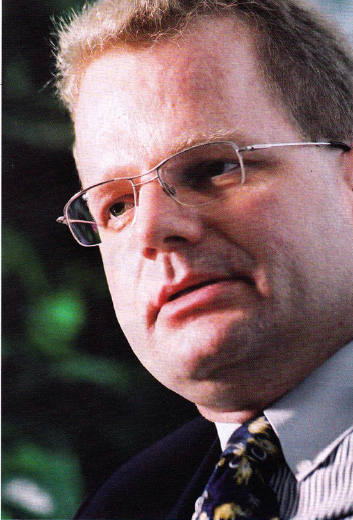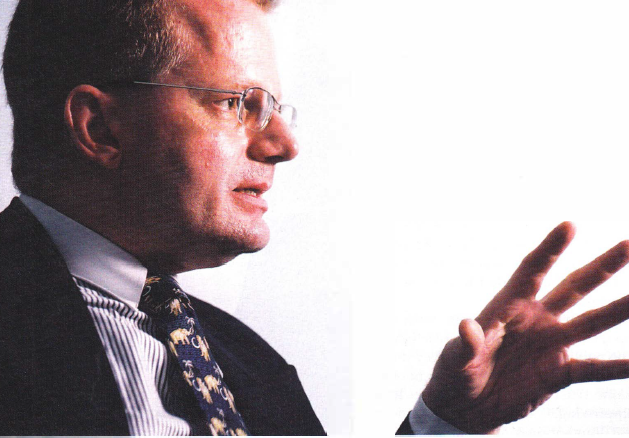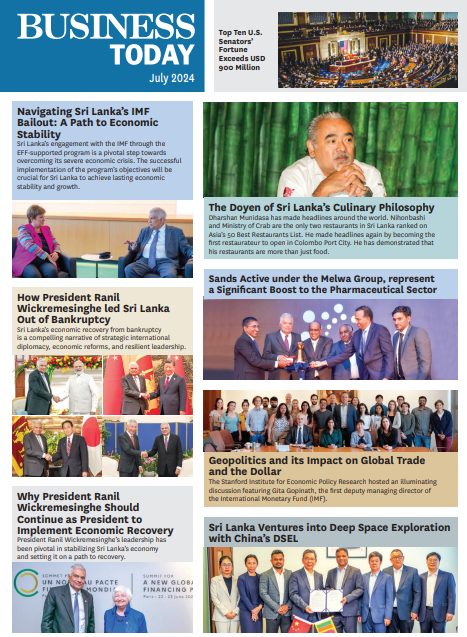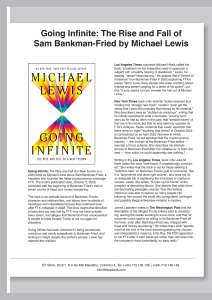During his visit to Sri Lanka, Dirk Berkemeyer, Regional Executive Partner based in Germany, of Audit Europe, Middle East & Africa (EMA), and Global Head of Audit Training of the accounting group KPMG, was interviewed by Shiron Gooneratne about KPMG’s efforts to help the Tsunami-affected areas of Sri Lanka. Berkemeyer also spoke about important aspects of auditing from a global perspective and about the KPMG global network.
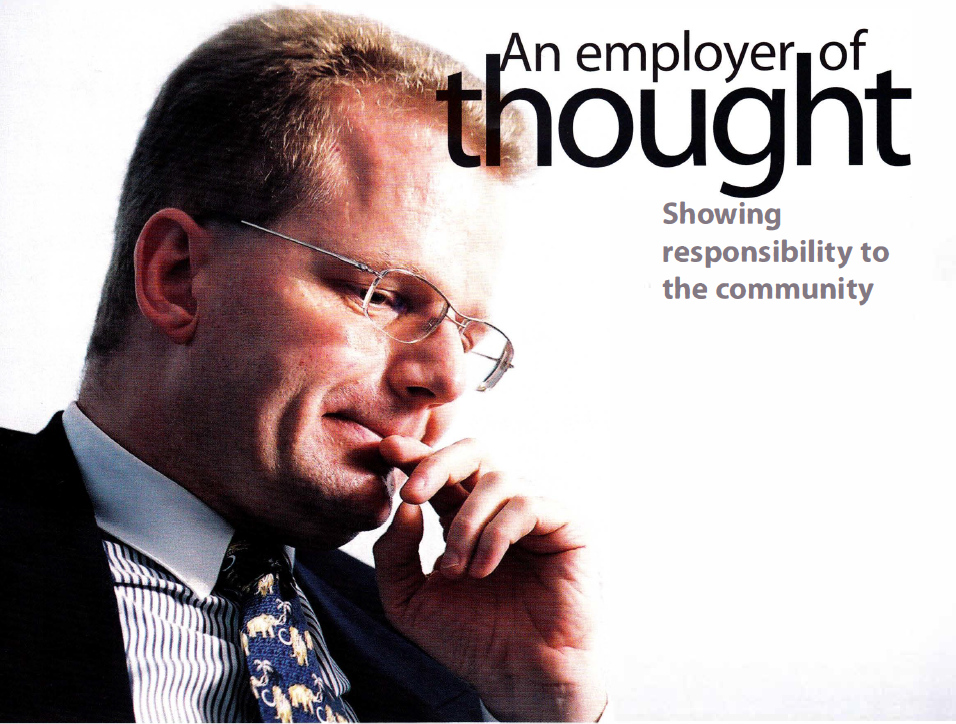
What was the purpose of your visit to Sri Lanka?
It was to open the village that has been rebuilt by money that came from KPMG Germany. However, we couldn’t go to the village because of the security concerns, otherwise I would have done . So I could only do it in a token ceremony in Colombo at which we signed the papers. These will then be handed over to the villagers. We plan to open the village physically later this year as soon as the security situation has cooled. The idea is to show our commitment to the community and also for me to go and see what was done with the money that our employees in Germany donated, because I would say most of them don’t know what is happening to their money. They saw the Tsunami disaster on television and decided to donate some money. Then we at the firm decided that every euro our employees donated we would double. That means we as the partnen would pay twice with our individual contribution and then out of our company profit. We then gave the donation to KPMG Sri Lanka because we wanted to avoid administration costs. We didn’t want to donate money that goes to administration and only half of it, or less than half, reaches the villagers. We wanted to reduce administration costs and I think we have achieved that. The MP from Jaffna gave a presentation on the progress of the village and what they have done and I think they have spent the money very wisely. This is the message I want to take with me to Germany and convey to our people who donated the money.
Can you give us some details about the location and the number of houses you have constructed?
The location is very close to Jaffna. If you forget about the checkpoints it is a 45 minute drive by car but with the check points I was told it can be up to two and a half hours. The village has been rebuilt in three phases and it now has 55 houses. There were some difficulties because of the sand. It’s built very close to the beach because all these people are fishermen and it was on land given to them by the government. The engineers I talked to told me that we couldn’t choose anywhere else because there’s always sand. Apparently this is a feature of the north of Sri Lanka and it was a bit difficult to build so this I think delayed the process. It also made it a bit more expensive because it would be easier to build a house on solid ground. However, they have managed to build these 55 houses and each house now has its own well. The way it worked was that other companies joined us in rebuilding this village. There is, for example, Hatton National Bank. They saw this project and decided to contribute to build a library. Now our firm here is looking for some other people to donate more money. Also some of our clients and our employees are very active in building a pre-school and the latest project is a road that has been built. Initially there were the 55 houses and because the village was built on sand it was very difficult for people to walk or use bicycles and I have been told this story. There was a pregnant woman about to deliver and they wanted to take her to the hospital so they put her on a bicycle but this bicycle couldn’t ride on the sand so finally they had to drag her to the hospital. When our representatives heard about this they decided there should be a road. There was some money left so they built this road. The villagers were so grateful they applied to the local authorities to name it after KPMG. That is what I want to open when I can go there. It is, in terms of location, in the area that is called government controlled – it’s not in the uncleared area. It is in the government-controlled area but the local LTTE representatives are also involved in this and they are supporting it. They are fully behind it and I think they are also quite grateful that someone is doing these things in the north because (again I am partly repeating what I heard from other people) I think many organisations go the easy way. They do their work in the south where you have nice locations, where it’s easy to go and there are no problems. Our firm here said we want to do something in all areas so we are funding five projects, two in the south and one in the north, and the others somewhere in the middle. And two of these villages are Sinhalese, one is Muslim, the one in the north is Tamil. Altogether it’s five because we wanted to spread it evenly among the different groups in Sri Lanka. I would say on the first come first served basis the money was given to the villagers and our US firm were the first to donate money so they got the first village which happened to be the one in the south and KPMG international was the second donor and they got the second one and we at KPMG Germany were the third ones, so we got the third village.
That is why we are funding the one in the north so it wasn’t chosen by us accidentally. All the other villages have been opened already and various people from KPMG came and went to the villages. I’m the only one who had to do the opening in the office and not in the village.
“Our firm here said we want to do something in all areas.”
Is cooperate social responsibility an integral part of KPMG?
Yes it has been a part of our mission statement for many years. KPMG says we are not only committed to profit but we are also committed to our employees and our community. In most of the KPMG firms we have dedicated people to look after these programmes. In Germany for example we have a full time person just to identify projects like this. The Tsunami project was the biggest one that KPMG Germany has funded outside Germany. But as I said before the concept is that we ask our people to give donations and then we double it up so it really depends on our people. It wasn’t only Sri Lanka it was SriLanka, India and Indonesia. They all got their share of the total fund. And then in the following year there was the earthquake in Pakistan and again we asked our people to give donations and then we doubled it up. We are currently rebuilding three villages in Pakistan. This is what we do outside Germany.
In Germany our focus is culture and science and education. So we are. sponsoring a lot of museums, theatres, and cultural events. Very often, especially in Berlin, you see exhibitions that say “sponsored by KPMG.” We are one of the biggest donors for the third private university in Berlin. Specially established for business administration, we have a programme to help schools. This means we send our partners to schools and they coach headmasters in management. Normally when they go to university they learn about how to teach but not how to manage and in days of declining budgets these schools have to manage with smaller budgets and these people don’t know how to handle it, so we have a programme to help them run the schools. We encourage our employees to participate in certain events.
We have the KPMG charity fund where the company organises a race and people have to pay in order to participate and it all goes through Red Cross for homeless children. If I look at our firm in Sri Lanka even though it’s very small on a global scale they do a lot of social responsibility projects as well. It is part of our culture and of our mission. We want to give something back to the community and this is important to our people. Globally we are facing a shortage of people. We can’t get enough people and many countries would grow faster if we had more people but we just can’t get people. So a lot of our bigger firms go to countries like Pakistan, Philippines and also Sri Lanka to a certain extent to recruit. Its just starting here but Pakistan and the Philippines have been exporting people for years already so our firms do these road shows and then they hire people to go to the US and the UK.
I had a meeting with our EMA audit leader and the head of audit from Ireland and he told me that we are so short of people, we have scheduled our first road show in Pakistan. I explained to him that Sri Lanka has the same features as Pakistan, which means English-speaking people, very good education system and many people who want to leave the country. Maybe this is a sad situation for the country but I think the best path is to go here and tell these people to go overseas. So Ireland is also starting to do it. I want to tell you we are very short of people so we have to try to get people from everywhere. Ten years ago Ireland would not have said that they wanted to hire people from Pakistan to work in Dublin but now they’re doing it because we can’t get enough people. So what we say is we need to be the employer of thought. We need to be so effective that every student who studies business administration would consider KPMG as among the firms to work for. We can’t be the number one for everybody but everybody who studies business administration should consider KPMG. We need to be on the short list. This is our very simple definition. So in order to achieve this we need to do more than just offering them a career and a salary. This is all-important but they want more. And by showing our responsibility to our community that adds a lot to their daily lives and they see that we are not just looking at making money.
“Social responsibility is part of our culture and of our mission.”
What is your role as global head of audit training at KPMG?
KPMG, like the other four big similar firms, is not one firm. It is a network of partnerships. For legal reasons we can’t be one firm because the audit profession in most countries is a regulated profession and foreign ownership is not allowed. In many countries only local CPAs can be partners and I as a German CPA couldn’t be a partner in our firm here because I’m not a Sri Lankan CPA. Because of these legal reasons and also because of risk management reasons, we are a network of member firms. That means we have 150 member firms and in the past they did their training on their own. We developed something globally like our audit tool and then we just gave it to them and said do with it whatever you want. .bnd• in the light of the globalising world and in the light of all our global clients we had to change. We have become much more consistent in training over the last few years.
I’ve been in charge of audit in the Asia pacific region in the past. This is when we started rolling out common tools and training programmes in the Asia Pacific region. I moved to Europe and became in charge of the much bigger region. And all this was not enough. We get more requests from our clients to be more consistent and we get these requests and this is really new from the regulator especially the public company accounting oversight board (PCAOB) in the USA.
They do annual inspections on every firm that audits more than 150 registered clients. That is of course our firm in the US and it is also our firm in Canada which is the only one out of the USA that audits so many. When they did the inspection in the USA they told us it would probably be better to have somebody who is globally in charge of training to achieve more consistency. The PCAOB don’t say you have to do this. It’s not the way they operate. They do their inspection and they say this is ok or this is not ok. They don’t tell you we want you to do this but they gave an indication that this is what they wanted. Then we debated it globally and we came to the conclusion that we have done enough on the regional level. We have reached the consistency that you need to really take it to a global level. I was appointed as global head of audit training, which was more than a year ago, and that means we are developing one common set of global training on our audit methodology and our audit tool on accounting. Then we roll it out again globally consistent. We don’t just give it to countries and say do with it whatever you want. We have common passions where all of them come together.
My global team delivers through sessions so it is not people from these 150 countries but a very small team of dedicated people. There have been sessions this year in Frankfurt for the EMA region and last month in Miami for Latin America. It is the same people that go from session to session and deliver the same training so you achieve much more consistency. In a firm of roughly 45,000 auditors globally you can’t have 45,000 people at three regional sessions so of course there is still a lot of training on the country level. Up to this level of training we total consistency. The next question is what do we do on the level below? What do we do in the 150 countries? And this is what we are currently working on. There are catalogue ideas on how we can achieve more consistency. When I met our training partner from Sri Lanka we went through his training programme and I compared it to what’s globally recommended. I saw what they do and what they do differently and then we came to the conclusion that they have some problems here in teaching technology because Sri Lanka is little behind in the means of technology. If you compare it with the US and the UK I think that’s not surprising. It means they have not used all of our audit tools here that we are using in the other countries. We want them to use these tools and they also want to use these tools and if you don’t have anybody who’s used them before it’s difficult to train your people. Because you can’t teach with credibility if you haven’t used it before. This is when we arranged a session where I send somebody from the global team to do it. The next year you have people who have used these tools and they can do it by themselves. This is the way we try to achieve consistency and I think we have made a lot of progress. But there is always room for improvement, it’s never perfect and it never will be. I think we have come a long way and we have a clear strategy where we want to go and it involves everybody. We don’t leave anybody behind.
In a small practice like Sri Lanka, which is clearly one of the smallest in the whole network, people-wise it is big but the revenue per person is so small here that on revenue scale it is among the smallest 20 of our 150 firms. But even in these practices we try to achieve consistency and they are keen to develop.
“We want to give something back to the community.”
Do you think that the accounting profession has lost the respect and confidence of people because of high profile cooperate scandals?
The simple answer is yes. Definitely in some of the bigger countries the reputation has been clearly damaged and the first one is the USA. The CPAs of the USA always had problems. In the 1990s the problem was that they did consulting practice and to do consulting was perceived to be more interesting. The CPAs were kind of reluctant to admit they were CPAs so they tended to say we are consultants. The big problem came with the cooperate failure and the reaction of the public – I wouldn’t say they don’t trust them – but definitely it’s not the same trust we enjoyed before. It is improving. Tougher regulations also means a tougher auditor, because now we can tell our clients it’s not only us, it’s also the PCAOB. If you don’t believe us and if you can’t do this wait until the PCAOB comes. Then it’s more pressure on us and on the client. In the light of this changing environment, the reputations are improving again and we see a lot of people joining the auditors, saying the auditors are the ones who go after the bad guys – so we get the good cop image. We are the ones who go into the company qnd check the numbers and maybe-by doing this we can find some of the bad guys. That seems to be attractive again so I would say it is improving but it’s still clearly not where it used to be maybe 30 years ago.
That’s in the USA, in Europe I would say it’s not as bad but of course it’s also damaged. The average person in the street does not really understand what an auditor does. They just read in the paper and they think we haven’t done our job properly so clearly it’s damaging. It’s not as bad as in the USA but the reputation is damaged. In Asia I think the country where we had the same issue is in Japan. In Japan the reputation of the auditors was always a bit on the lower end.
So to make a long story short, yes it is damaged. We see some improvement in some areas but this is definitely something that we have to work on. By telling the public what is our responsibility and what can we do and what not. We are not the police for example and we don’t have the same rights as a prosecutor. If the client does not tell us certain things, it’s difficult to come out. I don’t say we can’t but its difficult in the first place. And if a client collaborates with somebody outside to cook the books it can be difficult for us to find out what’s going on. We don’t rely on the client only, we have these processes for example from banks, from lawyers, from creditors and debtors. We ask for extra re-confirmation but if this is wrong, because of collaborations, it becomes very difficult for the auditor.
What would be the key attributes of tomorrow’s auditor?
I think we all will have to do much more with technology. We will use more tools and more sophisticated tools. We will probably move more in an environment of on going audit. Now the business model is the client is working for 12 months and we are closing the books. Then we come in and look at the numbers, which then leads to this effect where we have hundreds of auditors all at the same time working 18 hours seven days a week. I think we will move away from it because systems become more sophisticated. We can do more ongoing checks like a real time audit. We can audit how they recall certain transactions when the transaction happens. We don’t have to wait 12 months until we do this, we can do it in real time. This is certainly a direction we are moving towards. It doesn’t mean it will happen next year but gradually we will come to this. So technology is the key element.
The other key feature of an auditor is to be the expert in international standards. We have the international standards on auditing. We have the international financial reporting standard. And all of them become more and more complex. Now just one single standard out of all of this is probably the size of two books together; very complicated. We assume that our people know all these standards, which is again a burden on the training because we somehow need to train all of them. We need to update all the time because the standards keep on changiri.g and they are far more complicated than ever in the past. These standards like International Standards on Auditing (ISA) are becoming the global standards. We are moving away from local standards.
The EU has just recently introduced ISA for a list of clients to start with. In many countries we see it trickling down to the middle market. The ISAs are in the eighth directive. The eighth directive will make the ISAs mandatory in Europe as well but Europe is just one example; the same is happening elsewhere. So these standards becoming global standards we need to completely change our education system, which is out of our control. It is the universities that should change their curriculum. When I went to university we didn’t learn anything about ISA, we learnt German accounting standards and German auditing standards and in the UK they learned UK auditing standards.
“It is great to study accounting and it offers a lot of opppurtunities. And for a student in Sri Lanka it offers a lot of opportunities outside the country.”
In Sri Lanka they learned SriLankan accounting standards and Sri Lankan auditing standards because this was the world you lived in. Now we are moving towards global standards. That means we need to understand these global standards and the global standards tend to be more complicated than the local standards are. This is a big issue but it is a key feature of the auditor of the future and that he or she is fully familiar with these standards. And if I add another one it is how we approach thought and the attitude and again it is changing but we are not at the end of the stage yet. In the past it was not our responsibility to detect flaws and it still is not our responsibility but there are certain areas where we need to do certain tests and again the ISA’s are giving us direction what we have to do. There are certain procedures we have to go through that are procedures we would not have done in the past. And I think it will be swifter going forward. I don’t think we will have responsibility to detect all flaws because that is impossible but there will be tougher standards on audit and our people need to understand what the public expects from us. The public’s conception is that we go after the bad guys so we have to see the client as the potential enforcer, which is a change of mind. In the past and still now we see the client as the business partner. This will not change but we have seen that especially top management can commit fraud and if we sign off on the account it’s not good. This means the attitude, the professional sceptism, needs to be a key feature of the auditor of the future. We can’t accept anything until we have proof. This must be the attitude and we always need to keep in mind everybody could commit fraud. There is nobody in the company we can trust per se, we can only trust what we see in writing. When it is in writing it might be an issue where they are collaborating with somebody but there needs to be proof for everything. Don’t accept the management’s word or explanation without any further proof.
Risk management has become an important area or a high priority in the cooperate agenda. What’s the role an auditor can play in this area?
The average auditor in the field needs to keep in mind what I just said. That we cannot trust anybody per se. We need to be sceptical and the average auditor in the field needs to follow our risk management procedure. This the answer from the perspective of the average auditor in the field. For KPMG as a whole it is a much more pervasive element of everything we do. We always had risk management and since the end of downfalls they’ve learned all the lessons from the cooperate failures. The role of management has changed and how risk management is everywhere. All our procedures have risk management elements in them and our auditors need to understand why we do this and they need to apply this throughout their audit. It’s not only we do an audit and it’s also when you go home.
Let’s say when you fly home you shouldn’t sit in an airplane reading confidential client’s papers when the person sitting next to you could see it.
It’s simple, things like these that we need to teach our people and it doesn’t stop when you leave the client’s side; it doesn’t stop when you finish an engagement. It continues with, for example, work papers and it starts when you start a new engagement. There are certain procedures you have to follow, there are a lot of procedures around client acceptance and also client continuance so we do certain checks. Independence goes hand in hand with it. We need to make sure we are always independent from our clients so again before we accept a new client or continue an existing client we need to make sure we are still independent. Plus as the business leader it’s important to try and provide balance between risk management and the interest of our business. Of course we want to grow as a business and if you go through hundreds of procedures before you’re allowed to accept a new client, you see a lot of partners complaining about why they have to go through all these procedures. We need to find the right balance to do what is necessary but not to overburden our partner.
Finally what is the message you have for students who aspire to be accountants?
I would say for these students it is a great profession. There is a huge demand for accountants. As I said before we can’t fill all our openings so definitely there is a demand there so it works while studying accountancy or auditing. It is an interesting profession because you learn a lot, you go to many different companies, you learn about different industries and you meet a lot of different people. It’s a people business. It’s not for someone who wants to sit in a room behind closed doors just reading. It’s the interaction with the audit team, with your peers in the office and with the clients. It’s a very discussion intensive business with a lot of relationships. So it’s really interesting. My message would be that it is a great profession. It is great to study accounting and it offers a lot of opportunities. And for a student in Sri Lanka it offers a lot of opportunities outside the country.
